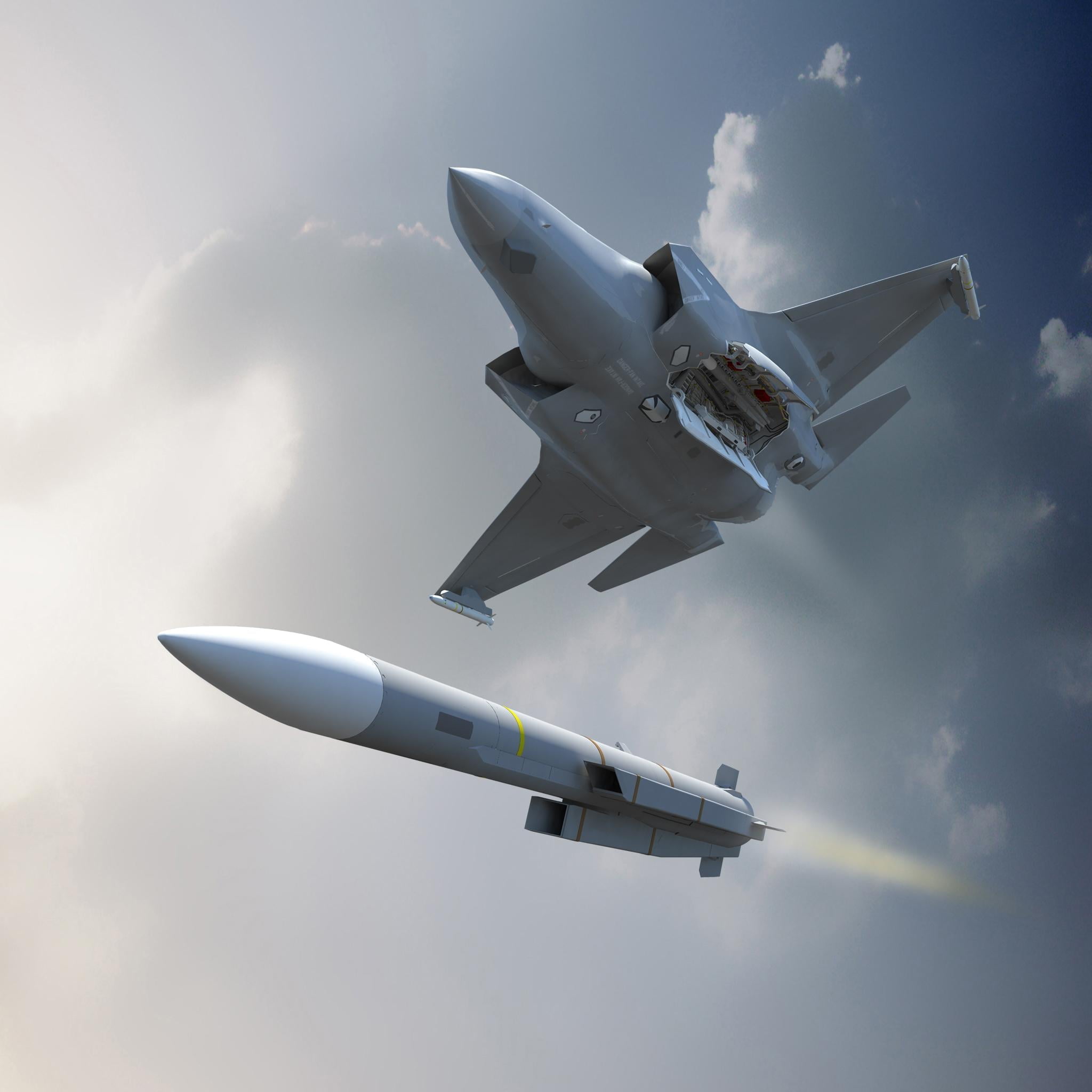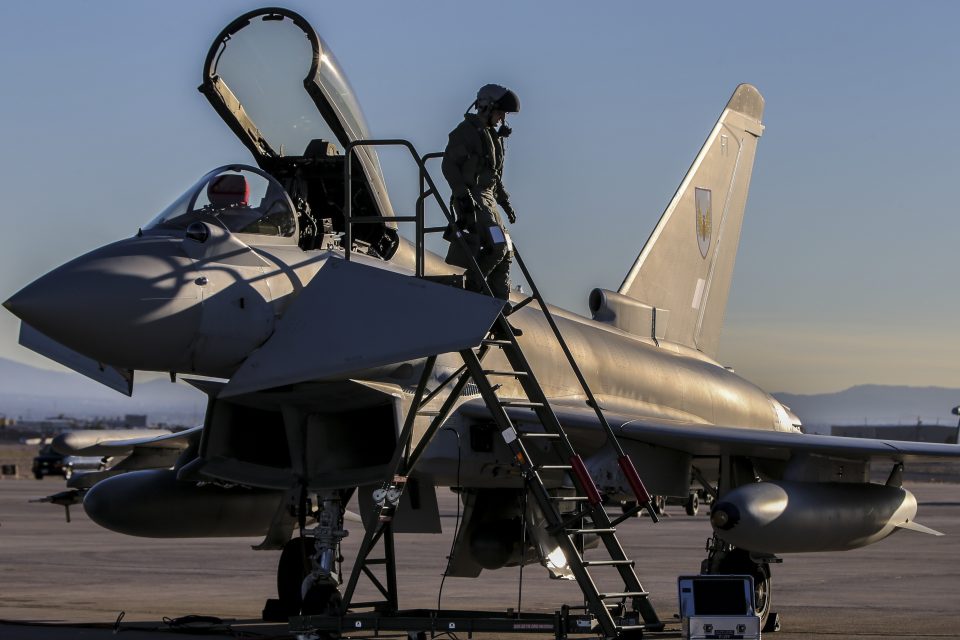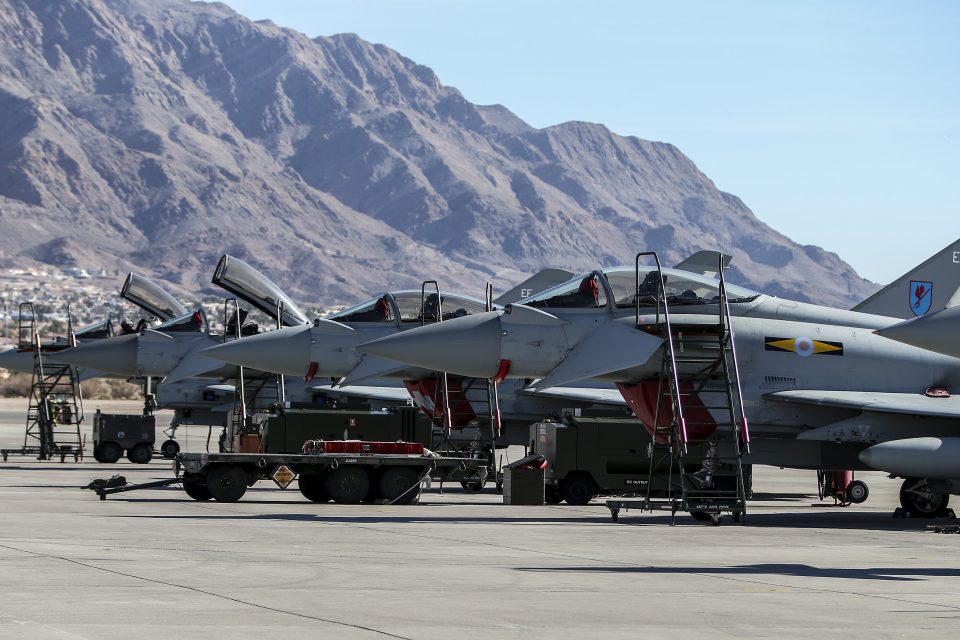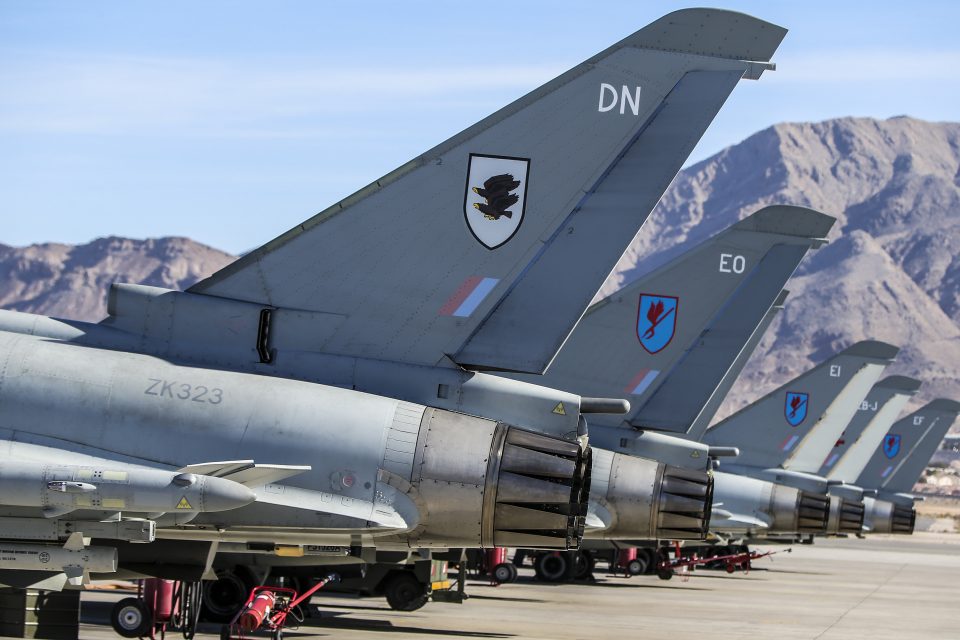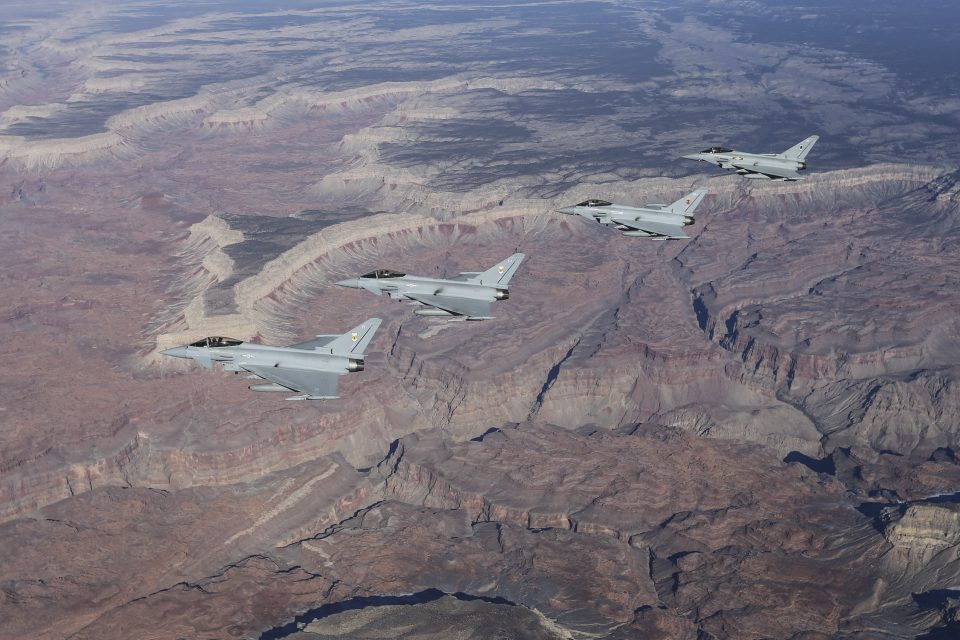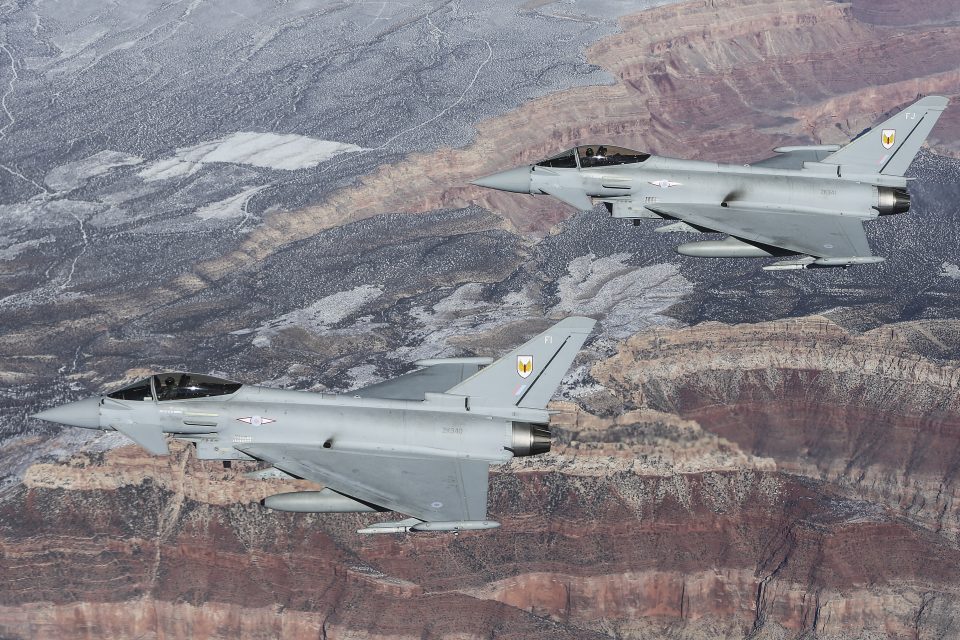2017-05-13 By Robbin Laird
The RAF is positioning itself for a triple transition.
The first transition is from the Tornado to Typhoon.
The second is the transition is to a fifth generation enabled air combat force.
The third transition is the deployment of F-35s aboard the new Queen Elizabeth class carriers and shaping their operational integration with land based Typhoons into an air-sea-land combat package.
The weapons revolution is being set into play enabling the capability to shape an integrated offensive-defensive strike force.
And at the heart of this transition are MBDA weapons being acquired through the UK’s Team Complex Weapons approach.
This is an approach which expands the partnership between industry and government whereby the customer can work more closely with industry to shape and drive the needs customized to its force development.
In this case, the customer needs to enable its high end legacy aircraft with an integrated approach to fifth generation enablement.
The first transition is about the Tornado going out of service with the Typhoon subsuming many of its core missions.
And this is being done by modifications to the Typhoon in its cockpit and software and the incorporation of key Tornado weapons, such as Storm Shadow and Brimstone.
This overall transition is referred to by the UK as the Centurion program which is designed to transition Tornado capabilities to the Typhoon by the end of 2018.
The incorporation of Tornado weapons is part of the Phases 2 and 3 Enhancement packages for Typhoon and also includes the introduction of a new missile the Meteor that can be considered to be a new capability being added to the force.
The Meteor adds range and lethality to the Typhoon in terms of its ability to carry out its air superiority missions.
While the incorporation of the Tornado weapons provides for an expanded Typhoon role, the addition of Meteor represents the next step in the weapons revolution enabled by fifth generation aircraft.
The Meteor’s longer range means that forward targeting by F-35s with data sent to Typhoons enables the air combat force to significantly enhance its overall capability to deliver longer range strikes against adversary air forces.
It shifts the consideration from the role Meteor can play on Eurofighter organically, to one whereby Eurofighter is providing strike for the penetrating air combat force enabled by the F-35.

This has already been seen at Red Flag 17-1 one this year.
Discussions with the Aussies, Brits and Americans involved in this year’s high end exercises emphasized that Typhoon’s strike weapons were enabled by targeting data from F-35s operating deeper in the battlespace.
When Meteor is added to Typhoon this means that Typhoons can fire its weapons load against targets identified by the F-35 force at a greater distance because of Meteor with network enabled kill capabilities.
This is the template for weapons to come.
It is about weapons in the force being empowered by forward targeting and decision making by the F-35 which in turn then highlights the importance of high weapons load outs which the Typhoon is designed for.
The Meteor then provides a strike means of much greater range than current US shorter range strike weapons.
In other words, the RAF is preparing itself with its longer-range strike weapons, Storm Shadow and Meteor, to be a core weapons carrier for an F-35 enabled combat force.
And the force is being designed along these lines.
There are other key advantages of the approach as well.
With various European legacy air forces buying Meteor and Storm Shadow, stockpiling of weapons can be enabled to reduce costs and to enhance capabilities at the same time.
With Meteor to fly on multiple European air frames, development costs can be reduced, modernization enhanced and logistical reach enhanced.
This also is a template upon which forces can build.
Both templates – off-boarding of strike and weapons stockpiling across air frames – are key to the next phase of the weapons revolution.
The first will be about building out capabilities from a force which no longer is focused on what the single combat aircraft or its close proximity wing men can deliver but upon what the combat force can deliver enabled by F-35 forward based decision making and target identification.
A glimpse of this future was seen in Red Flag 17-1 one where one RAF pilot asked “Where are our SEAD weapons for Typhoon?
The F-35 identified clearly the targets; but why is it dropping weapons in the SEAD mission?
Why not pass that on to us and we can then fire the long range SEAD weapons against targets identified, selected and ordered up by the F-35s?”
Good question and will be answered by the next phase of the weapons revolution.
Another part of this evolving template was seen in tests earlier this year whereby MADL data (the video data stream which the F-35s use to transfer machine to machine data) was passed to Typhoons.
This development opens up the possibilities of transferring selective targeting video packages to other elements of the combat force.
And this could well see the transfer of another of the Tornado experiences, namely, the role of the weapons officer.
The Tornado has continued to fly for so long with effectiveness largely because of the combination of a weapons officer on board and the arrival of dual seeker Brimstone.
This strike package is a bus containing weapons which are independently directed to their target and managed by the weapons officer onboard Tornado.
Spear 3, a new MBDA weapon, will allow the single cockpit aircraft to use automation to replicate some of this capability.
But the role of the weapons officer could well be transitioned from a platform like Tornado to the combat force itself.
There is no reason that the weapons officer could not be flying on the Wedgetail, or A400M or another aircraft whereby the distributed strike force has embedded in it lower cost weapons which are guided to their targets by a weapons manager supporting the fifth generation enabled strike force.
And this will clearly be the case as the capabilities of the naval surface fleet flow into the air combat force as well.
Clearly, there is no reason weapons from a surface ship could not become part of the strike arsenal of an F-35 enabled air combat force.
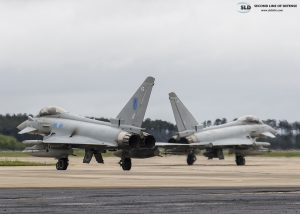 RAF Typhoons leaving EOR at JBLE for an Atlantic Trident ’17 vul.
RAF Typhoons leaving EOR at JBLE for an Atlantic Trident ’17 vul.
Last year, I discussed this development with a number of UK, Australian and US naval officers and clearly the ultimate meaning of the US Navy’s focus on NIFCA is to enable a JIFCA.
The Navy is working on the integration of several assets to deliver integrated strike but there is no reason that this effort should not break service boundaries and become joint.
The UK is in a good position to do this as their F-35 force will be flown by an integrated team of Air Force and Navy pilots and enabling a carrier strike force.
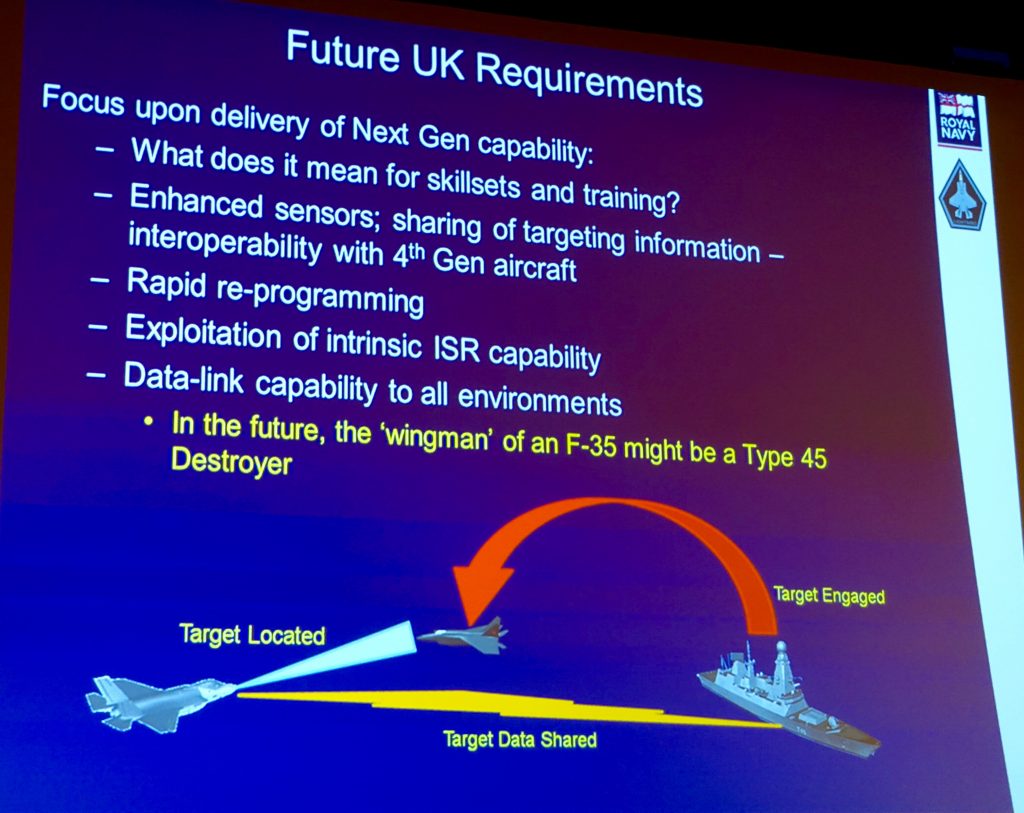 From Presentation by Captain Walker, Royal Navy, at the Williams Foundation seminar on Air-Sea Integration, August 2016
From Presentation by Captain Walker, Royal Navy, at the Williams Foundation seminar on Air-Sea Integration, August 2016
The opportunity was highlighted in an interview I did with, Rear Admiral Mayer, the Commander of the Australian Fleet, last year in Australia.
Clearly, a key part of the evolution is about shaping a weapons revolution whereby weapons can operate throughout the battlespace hosted by platforms that are empowered by networks tailored to the battlespace.
And that revolution will have its proper impact only if the network and C2 dynamics discussed by Rear Admiral Mayer unfold in the national and coalition forces.
“The limiting factor now is not our platforms; it’s the networks and C2 that hold the potential of those platforms down.
“When the individual platforms actually go into a fight they’re part of an interdependent system, the thing that will dumb down the system will be a network that is not tailored to leverage the potential of the elements, or a network that holds decision authority at a level that is a constraint on timely decision making.
“The network will determine the lethality of our combined system.”
In short, the way the RAF is approaching Typhoon-F-35 integration prioritizes the weapons revolution and network enablement.
This is clearly the way forward for a 21st century air combat force.
And the shift in how integration is done and the reshaping of combat effects was evident in Red Flag 17-1.
With the F-35 in RF17-1, the entire combat force was reconfigured to get maximum advantage from the performance of the other air combat assets.
This reshuffling was driven by the forward operating SA of the F-35 and its ability to make decisions on the fly and to drive appropriate information to informed combat assets to deliver ordinance on target.
With regard to the RAAF and its participation in Red Flag 2017-1 and the role of Wedgetail, Group Captain Bellingham had this to say about the evolving approach to fifth generation enabled air combat:
Question: I think Red Flag 17-1 is a good example of how we collectively are shaping a way ahead.
In effect, we are seeing the training of a network of operators who can shape high intensity air operations under the impact of fifth generation warfighting concepts.
The technology is crucial; the platforms are important; but it is the training towards where we need to go that is crucial, rather than simply training to the past.
Is that not where your experience with Wedgetail and working with allies comes in?
Group Captain Bellingham: That is a good way to set up the discussion.
I think the strength of everything we’re doing at the moment only comes from a strong cooperation with our allies. Obviously, we’re a tiny force, and our relevance and real strength becomes fully apparent when we tie our capabilities with those of our allies.
At Red Flag 17-1, we saw the US, the UK and Australia blending advanced assets together to make the entire force more lethal and survivable in the high end threat environment.
 RAF Typhoons on the ramp with Strike Eaglesat Joint Base Langley-Eustis during Atlantic Trident ’17.
RAF Typhoons on the ramp with Strike Eaglesat Joint Base Langley-Eustis during Atlantic Trident ’17.
And in a discussion with RAF pilots participating in Red Flag 17-1, the key impact which the F-35 has on the combat force.
“As we introduce the F-35, the pilots have to adjust to the fact that their machines will see and convey data that they themselves are not looking at.
“And different airplanes will have different levels of SA in the battlespace.
“How to adjust the operation of the force to meet this challenge?”
And there are legacy and then legacy aircraft when it comes to the impact of the F-35.
“If you optimize the relationship between fourth and fifth-gen surely you’d have your fourth-gen as out of harm’s way as you could as they are not low observable amongst those things.
“Therefore, you’d want to have onboard the 4th gen aircraft longest-range weapon you could possibly manage and I don’t think a Hornet of any variety is the right platform for that.
“And actually Typhoon, whether it’s by accident or by design, does give you that especially with Meteor.”
And the RAF is moving ahead with F-35 and Typhoon integration on the connectivity level as well.
In the Babel Fish III trial in February 2017, enhanced connectivity was demonstrated.
“During the trial, the Northrop Grumman Airborne Gateway connected the fifth-generation F-35B, which communicates using the stealthy Multifunction Advanced Data Link, and the fourth-generation Typhoon, by translating MADL messages to Link 16 format. Link 16 is the U.S. and NATO military tactical data link used by some military aircraft, ships and ground forces to communicate and exchange tactical data.
The F-35 and the Typhoon can communicate directly via Link 16 but previously could not communicate or share certain fifth-generation information.”
Andrew Tyler, chief executive, Northrop Grumman Europe said:
“Being able to network sensor data between fifth-generation and fourth-generation fast-jets and other battlespace assets in a stealthy manner is critically important to enabling the full capability offered by fifth-generation aircraft.
We are pleased to have played our part in this successful trial, the output of which will help the MOD to broaden its understanding of the effect that can be generated by its fifth-generation combat-air fleet.”
Air Commodore Linc Taylor Senior Responsible Owner for the UK’s F-35 Programme said:
“I have been enormously impressed both by the collegiate effort to make the Babel Fish III trial happen so successfully, and the specific outcomes of the trial.
This marks another great step forward in interoperability between our fourth- and fifth- generation aircraft, putting the RAF at the forefront of this work. We plan to continue to understand and develop where the most capability and interoperability benefit lies through a series of future trials along similar lines.”
According to the company:
“Bridging this fifth-to-fourth generation platform interoperability gap was made possible by the inclusion of a Northrop Grumman Freedom 550™ software-defined radio in the Airborne Gateway.
The Freedom 550™ is derived from the integrated communications, navigation and identification avionics suite the company developed and manufactures for the F-35; it was validated under the Jetpack Joint Capability Technology Demonstration programme, an effort sponsored by the Office of the Secretary of Defense and U.S. Air Force that concluded in 2014.
Northrop Grumman’s Airborne Gateway translates and relays information from various sources across diverse platforms and domains to enhance interoperability, situational awareness, communications and coordination for warfighters in the air, on the ground and at sea. The system is derived from the combat-proven airborne communications node that Northrop Grumman provides to the U.S. Air Force.”
F-35 aircraft have also successfully passed target data off to Typhoon jets who then successfully engaged the target during Exercise Red Flag.
The F-35 is designed to share what it sees with legacy aircraft.
The US Air Force state that the lethality of the aircraft comes from ‘a combination of stealth, electronic attack, information sharing, and other features make the platform an invaluable part of a modern air-strike package.’
Col. George Watkins, 34th Fighter Squadron commander said:
“Our strength with the F-35 has been finding the threats.
We use our onboard system to geo-locate and get a picture of the target, day or night, through the weather. We pass that threat information to others while using our stealth capability. We can get a lot closer to the advanced threat than anyone else can get.
That allows us to target them out and take out critical assets.”
Lt. Col. Dave DeAngelis, F-35 pilot and commander of the 419th Operations Group said:
“During one scenario, the Airmen were given a general location by advanced intelligence, surveillance and reconnaissance aircraft. The F-35s were tasked with finding a convoy carrying a high-value target.
The F-35s advanced targeting capabilities were able to pinpoint the convoy’s location. They then communicated that to British Typhoon fighters who took out the target.
The thing that’s great about having Link 16 and MADL onboard and the sensor fusion is the amount of situational awareness the pilot has.
“I’m able to directly communicate with specific formations and I can see the whole war, and where all the other players are, from a God’s-eye view.
“That makes me a lot more effective because I know who to talk with and at what times, over the secure voice.”
The F-35 uses the Link 16 secure architecture to communicate with fourth-generation aircraft in the Red Flag fight and combined with the Multifunction Advanced Data Link, which allows pilots to see the battlespace and share that data with other F-35 pilots.
Using the F-35 as a broad area sensor can also significantly increase a warships ability to detect, track and engage a target.
An unmodified US Marine Corps F-35B from the Marine Operational Test and Evaluation Squadron, based in Edwards Air Force Base, acted as an elevated sensor to detect an over-the-horizon threat.
The aircraft then sent data through its Multi-Function Advanced Data Link to a ground station connected to USS Desert Ship, a land-based launch facility designed to simulate a ship at sea.
Using the latest Aegis Weapon System Baseline 9.C1 and a Standard Missile 6, the system successfully detected and engaged the target.
The exercise was the first live fire missile event that successfully demonstrated the integration of the F-35 to support Naval Integrated Fire Control-Counter Air and represent a very promising exploration into the interoperability of the F-35B with other naval assets.
The F-35 will drastically increase the situational awareness of the forces with which it will deploy and for the UK, where deployed numbers may be a concern, it represents a fantastic way to enhance combat capability in any coalition or national effort.
Editor’s Note: The photos of Typhoon at Red Flag 17-1 are credited to the RAF.


